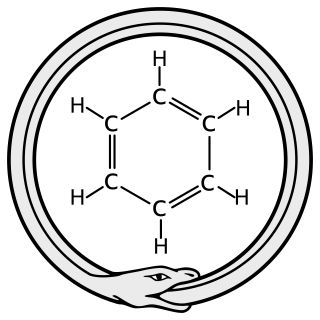Creativity
Catalyzing Creative Cultural Change
Exploring the distinct roles of learning and creativity in cultural evolution.
Posted April 12, 2024 Reviewed by Davia Sills
Key points
- There is no deep algorithmic difference or sharp dividing line between social and individual learning.
- There are also cases midway between individual learning and creativity.
- In addition, there are cases midway between social learning and creativity
- Information obtained through learning may catalyze a creative reconceptualization that fuels cultural change.
My last blog post mentioned the distinction between social learning, in which one learns from someone else, and individual learning, in which one learns from the non-social environment. However, particularly in the era of chatbots and robots, the distinction between these is not clear-cut.
There is no deep (algorithmic) difference or sharp dividing line between social learning and individual learning.
After all, does it matter whether a child learns to peel a banana by watching her mother, or by watching a monkey, or by watching a cartoon character on TV, or by watching the petals of a tulip unfold (Gabora, 1996)? If different people saw the same lecture but one saw it in person while the other saw it online or delivered by an avatar, the learning process would not be different in kind. Social learning and individual learning are merely different ends on the continuum of how directly another human intervenes in the learning process.
Social learning is often (though not always) more engaging and interactive, and for that reason may provide more opportunity for learning, but both social learning and individual learning play the same fundamental role: They spread existing knowledge. Together they comprise the continuity component of cultural evolution, ensuring that solutions, artworks, rituals, and so forth with cultural meaning or value are not lost from the society as a whole, but retained.
There is not only a grey zone between social learning and individual learning, but also between individual learning and creativity.
For example, if a child learns how to dance by watching a tree shake in the wind, the child’s dance could be interpreted as a new element of culture, even though in some sense that way of moving "already existed," i.e., the tree already moved in that way. Indeed, biologists may have already known that the trees shook this way in the wind, in which case this knowledge was not even new to human culture. In this example, we can break the process into two steps. First, the child acquired knowledge of the tree’s movement through individual learning. This step involved knowledge transmission. Next, the knowledge of the tree’s movement catalyzed a second step in which the child mapped the movement of the tree onto the human body, through the creative process of analogy making. This step involved knowledge generation.
Much creativity is similarly derived, directly or indirectly, from experience of the natural world (it is grounded); thus, a drum beat might echo a heartbeat, or a sad-sounding chord progression might be reminiscent of the sound of someone sobbing (Gabora, 1996). In each case, we can break the process down into two steps: knowledge acquisition through individual learning, which then catalyzes creative transformation of the knowledge.
In addition, there are situations midway between social learning and creativity.
A classic example is the interaction between Orville and Wilbur Wright, inventors of the airplane (Heppenheimer, 2003). It is uncertain whether either one would have accomplished this on their own; they accomplished it by continually prodding each other with new ideas and perspectives on the problem of flight.
Situations wherein creativity depends on social learning also happen in other kinds of creative collectives, such as musical groups and theatre ensembles. Once again, in each case, we can break the process down into two steps: knowledge transmission from person A to person B through social learning, which catalyzes creative transformation of that knowledge in person B’s mind. Indeed, a creative process may involve hundreds or thousands of such two-step subprocesses, with person B also transmitting knowledge to person A that catalyzes a transformation of that knowledge in person A’s mind.
We have seen, then, that there are cases midway between individual learning and social learning, between individual learning and creativity, and between social learning and creativity. Does that mean that they all variants of more or less the same thing? I believe not, because creativity plays a fundamentally different role in cultural evolution than in the other two. While individual learning and social learning ensure cultural continuity, creative processes ensure cultural generativity; they secure that ensuring the appearance of new possibilities that might work even better than existing ones.
How does this distinction figure into the actual cultural evolution process in which we collectively participate? A branch of network science, referred to as the study of reflexively autocatalytic foodset-derived networks—or RAFs, for short—enables us to not just mathematically model but also diagrammatically illustrate how social learning, individual learning, and creativity figure into any given contribution to cumulative culture. These networks were first applied to chemical networks, and the terminology is inherited from this original application. Specifically, we use the term reactant to refer to the existing knowledge that served as the raw ingredient(s) for the new idea and the term product the new idea itself, and we use the term catalyst for whatever sparked the new idea.

Consider as an example, Kekulé’s insight into the structure of benzene by visual analogy of a snake biting its tail (Findlay, 1965) (Figures 1 and 2). The "reactants" were his knowledge of snakes, circles, and organic chemistry (abbreviated S, C, and O in Figures 1 and 2), most notably, his conception or mental representation of benzene as a molecule that was particularly inert: that is, it didn’t interact with other molecules. The "product" was his new mental representation of benzene as ring-shaped (abbreviated R). The "catalyst" that sparked this new conception of benzene was the vision of a snake biting its tail, or ouroboros (abbreviated U). We say that he engaged in representational redescription (RR) because his mental representation of benzene underwent a change. Figure 1 gives the sequence of steps—including social learning steps, individual learning steps, and creative steps—involved in not only Kekulé’s insight into the structure of benzene but also the cultural transmission of this insight to others (abbreviated CT) and how this insight subsequently influenced Jung’s psychology of the unconscious (abbreviated P) (Jung, Von Franz, Henderson, Jaffé, & Jacobi, 1964).
Figure 2 then shows how RAF networks are used to diagrammatically illustrate this particular example. This example illustrates the unique role of creativity in triggering the transformative conceptual change that fuels new cultural contributions.
References
Findlay, A. (1965). A hundred years of chemistry (3rd ed.). London, UK: Duckworth.
Gabora, L. (1996). A day in the life of a meme. Philosophica, 57, 901-938.
Gabora, L. & Steel, M. (2022). From uncertainty to insight: An autocatalytic framework. In: Beghetto, R. & Jaeger, G., Eds. Uncertainty: A Catalyst for Creativity, Learning and Development (pp. 125-158). Berlin: Springer.
Heppenheimer, T. A., 2003. First Flight: The Wright Brothers and the Invention of the Airplane. John Wiley & Sons.
Jung, C. G., Von Franz, M. L., Henderson, J. L., Jaffé, A., & Jacobi, J. (1964). Man and his symbols (Vol. 5183). New York: Dell.




